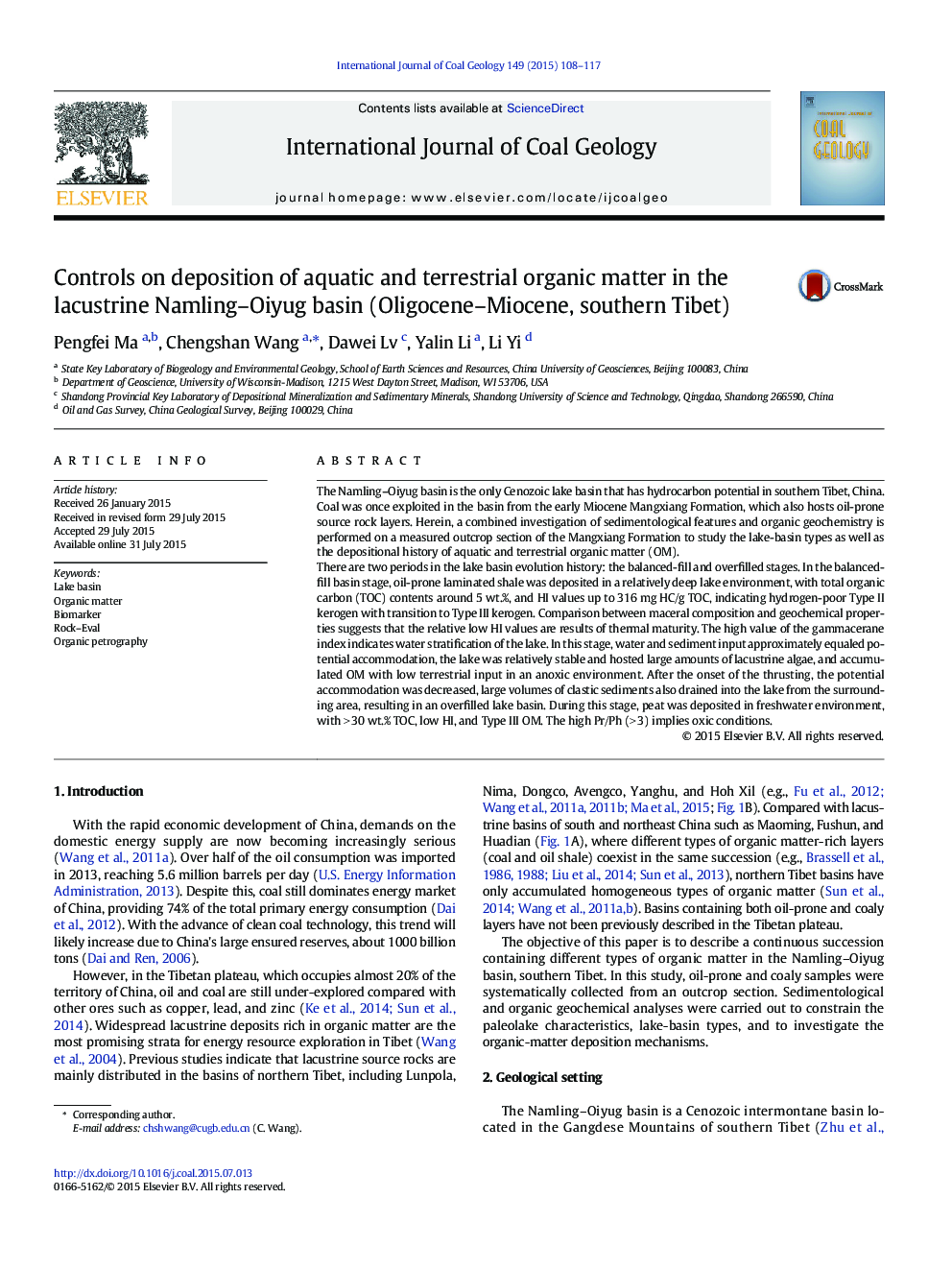| Article ID | Journal | Published Year | Pages | File Type |
|---|---|---|---|---|
| 1752910 | International Journal of Coal Geology | 2015 | 10 Pages |
Abstract
There are two periods in the lake basin evolution history: the balanced-fill and overfilled stages. In the balanced-fill basin stage, oil-prone laminated shale was deposited in a relatively deep lake environment, with total organic carbon (TOC) contents around 5Â wt.%, and HI values up to 316Â mg HC/g TOC, indicating hydrogen-poor Type II kerogen with transition to Type III kerogen. Comparison between maceral composition and geochemical properties suggests that the relative low HI values are results of thermal maturity. The high value of the gammacerane index indicates water stratification of the lake. In this stage, water and sediment input approximately equaled potential accommodation, the lake was relatively stable and hosted large amounts of lacustrine algae, and accumulated OM with low terrestrial input in an anoxic environment. After the onset of the thrusting, the potential accommodation was decreased, large volumes of clastic sediments also drained into the lake from the surrounding area, resulting in an overfilled lake basin. During this stage, peat was deposited in freshwater environment, with >Â 30Â wt.% TOC, low HI, and Type III OM. The high Pr/Ph (>Â 3) implies oxic conditions.
Related Topics
Physical Sciences and Engineering
Earth and Planetary Sciences
Economic Geology
Authors
Pengfei Ma, Chengshan Wang, Dawei Lv, Yalin Li, Li Yi,
